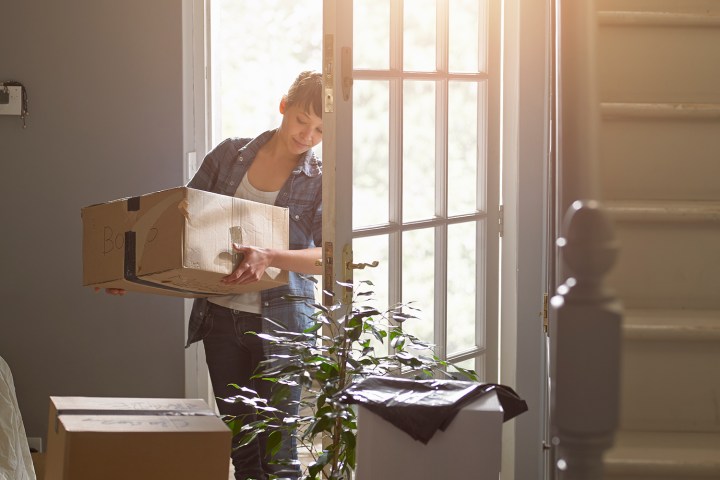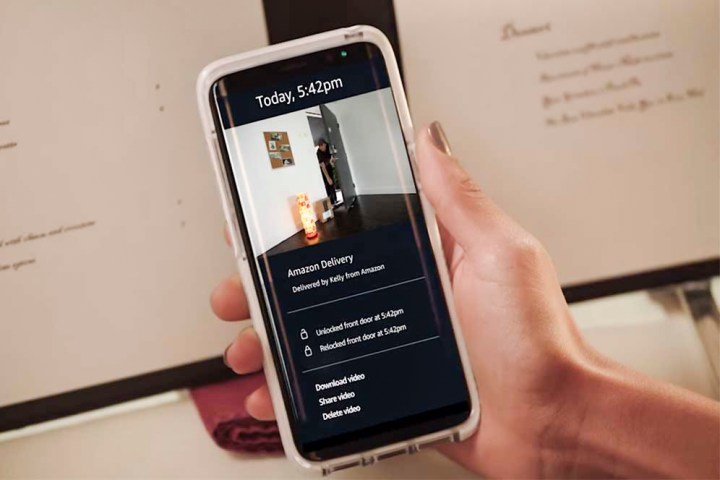
If you’re like me, you get lots of packages from Amazon.
I typically have a couple of packages delivered to my home every day on average, as well as groceries delivered once a week via Amazon Prime Now. You might call me a heavy user. In fact, I probably need to leave work early today to make sure that the air mattress, kitchen sponges, and the USB charging cables that were delivered today are still sitting on my front porch. (Just so you know, those are three random items I needed for my home and are in no way related.)
When I heard yesterday about Amazon Key, the soon-to-be-available system that allows Amazon couriers into your home to deliver packages, I was intrigued. Is it possible that I would no longer have to sit at work and wonder whether a thief will saunter by and swipe my son’s new birthday bike off the porch? That sounds fantastic.
But then I realized that there’s something worse than getting a bike stolen: Having a stranger inside my house delivering my son’s bike. This person will be inside my house while I’m not there. Or maybe worse, maybe they’d accidentally let themselves in when I was there. Either way, that’s just … creepy.
How much of our privacy and safety are we willing to sacrifice for convenience?
To be fair, Amazon tried to preemptively address these concerns with – of course – technology. The courier arrives at your house and scans the barcode on the package. From there, Amazon determines that the correct driver has arrived at the correct door with the correct package. Amazon sends you an “Arriving Now” notification for the package. The driver then knocks on the door or rings the doorbell and then sends a request to open the door. The Amazon Cloud Cam, a camera that comes as park of Amazon’s $250 Key Kit, begins recording at your request, and your smart lock unlocks the door. The courier steps inside, puts your package on the floor, locks the door, and leaves. You can view the footage of the process in real time to make sure all goes smoothly.
The system isn’t just for Amazon couriers – you also can let anyone else you want in through an app on your phone, whether it be the dog walker, the cleaners, or a postal worker with a package.

This isn’t the only system of its kind – Walmart recently launched an in-house grocery-delivery partnership with August Smart Lock in a few test markets in California. The driver uses a one-time passcode to enter your home, put your groceries in your fridge or wherever you specify you want them, locks up, and then leaves.
But with Amazon, somehow things seem a bit more invasive. Maybe it’s because Amazon is such a part of our lives already – you’d be hard-pressed to find someone these days without a subscription to Amazon Prime or an Echo Dot in their house. Amazon already knows quite a lot about what we like to do in our spare time, what we eat, what we listen to, and how we pay for it all, making that delivery person’s initial step into our homes feel like one step too far.
The question is, how much of our privacy and safety are we willing to sacrifice for convenience?
There’s something worse than getting a bike stolen: Having a stranger inside my house delivering my son’s bike.
I’m positive that 99 percent of drivers will conduct themselves as instructed, just as 99 percent of Uber drivers conduct themselves as instructed. But what about that one percent? What about the one who will be tempted to swipe that laptop off the kitchen counter and run? The one who might be doing a clandestine inventory during delivery, quickly noting where cameras are, where the safe is, or which windows have sensors on them, so they can return later?
What about the one who disregards the protocol entirely, deeming it worth the risk to take a look around upstairs and rifle through jewelry boxes or underwear drawers? Sure, a camera is recording all of this, but how quickly can a police officer get there?
I know I’m sounding quite alarmist here, but there’s a reason for it: Our home is truly one of the last places where we can expect our family to be safe in this increasingly-violent, unstable world. No matter how much I desire to have my stuff delivered safely, I value the sanctuary of my home more.

I understand why people are excited about this concept, as it could eliminate the problem of porch pirates altogether, dramatically reducing reports of petty crime and ensuring that people get their stuff. It could also decrease theft during the holiday shopping season when deliveries – and theft – increase exponentially.
In an email, Amazon assured us that Key drivers are thoroughly vetted via comprehensive background checks and motor vehicle records reviews. Amazon relies heavily on UPS and FedEx drivers, which are required to undergo drug tests as well as background checks upon hire. Furthermore, Amazon will not enter your home unless you give permission via the app.
“Amazon Key gives customers peace of mind knowing their orders have been safely delivered to their homes and are waiting for them when they walk through their doors,” said Peter Larson, vice president of Delivery Technology at Amazon, in the press release announcing the system.
I get it – I really do. But I think that I would rather just leave the strangers – delivery people included – outside with my front door locked. I’m just not ready to let that last little bit of Amazon outside into my home and my life.


